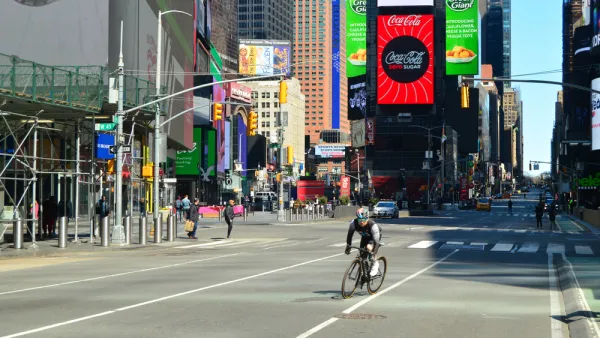The EPA's newly proposed rules to reduce sulfur in gasoline may have the perverse effect of making alternative vehicles, that is, those that don't run on gasoline, less competitive with conventional vehicles and ensure that we remain addicted to oil.
Matthew Wald explains the arcane nature of the new EPA rules and their effect on tomorrow's motor vehicles. The good news is that conventional vehicles burning gasoline will become more efficient; the bad news is that the rule will "likely help the conventional automobile survive against competition from vehicles powered by electricity, natural gas and other cleaner alternatives."
Is a leaner, gas-sipping auto the best way to go, even if it means crowding out vehicles that don't burn any gasoline?
THE Environmental Protection Agency’s latest proposed tightening of limits on sulfur in gasoline, and its previous rules, will most likely have the perverse consequence of retarding the development of cars running on batteries, advanced biofuels or hydrogen — all promising but expensive technologies that have not become mass-market products.
The thrust of the Tier 3 rules are to protect the catalytic converter from the destructive aspect of sulfur. But it's effects may be further reaching. But it's not solely the Tier 3 rules - it's the fuel efficiency requirement, also referred to as CAFE standard, that drove them and may prevent alternatives from getting a wider foothold.
Obscured by all the numbers is that the various technologies promoted as alternatives to gasoline — batteries, fuel cells or natural gas — are now facing a refined internal combustion engine. The federal government in large part drove automakers toward engine improvements by requiring them to essentially double fuel efficiency by 2025.
However, many in the environmental community dispute the assertion that the more efficient internal combustion engine represents a threat to alternative vehicles.
At the Union of Concerned Scientists, David Friedman, deputy director of the clean vehicles program, said that the Tier 3 proposal was a sign of success driven by the alternatives. “There is a long history of exactly this happening,” he said, recalling that when methanol was being promoted as a cleaner fuel the oil companies said, “'Hey, we can clean up our fuel, too.''’
FULL STORY: Emissions Rules Put Alternative-Fuel Vehicles in a Bind

National Parks Layoffs Will Cause Communities to Lose Billions
Thousands of essential park workers were laid off this week, just before the busy spring break season.

Retro-silient?: America’s First “Eco-burb,” The Woodlands Turns 50
A master-planned community north of Houston offers lessons on green infrastructure and resilient design, but falls short of its founder’s lofty affordability and walkability goals.

Delivering for America Plan Will Downgrade Mail Service in at Least 49.5 Percent of Zip Codes
Republican and Democrat lawmakers criticize the plan for its disproportionate negative impact on rural communities.

Test News Post 1
This is a summary

Test News Headline 46
Test for the image on the front page.

Balancing Bombs and Butterflies: How the National Guard Protects a Rare Species
The National Guard at Fort Indiantown Gap uses GIS technology and land management strategies to balance military training with conservation efforts, ensuring the survival of the rare eastern regal fritillary butterfly.
Urban Design for Planners 1: Software Tools
This six-course series explores essential urban design concepts using open source software and equips planners with the tools they need to participate fully in the urban design process.
Planning for Universal Design
Learn the tools for implementing Universal Design in planning regulations.
EMC Planning Group, Inc.
Planetizen
Planetizen
Mpact (formerly Rail~Volution)
Great Falls Development Authority, Inc.
HUDs Office of Policy Development and Research
NYU Wagner Graduate School of Public Service



























